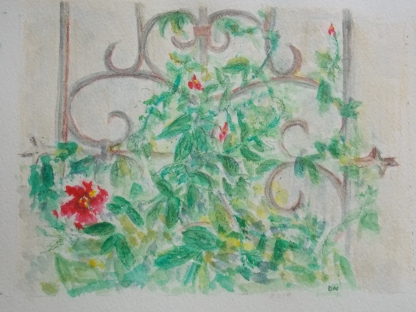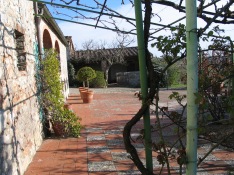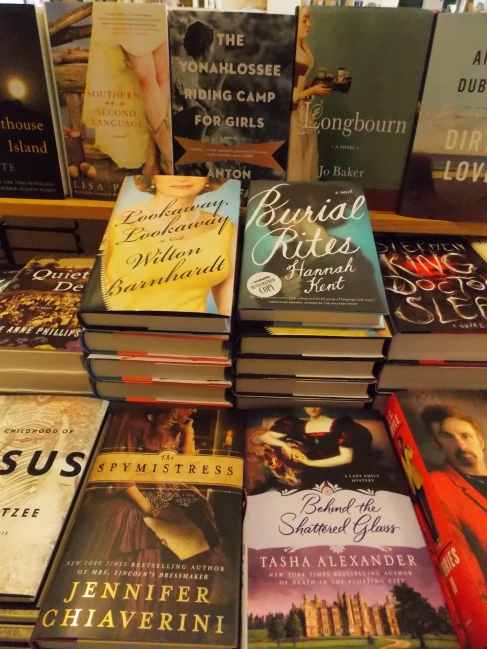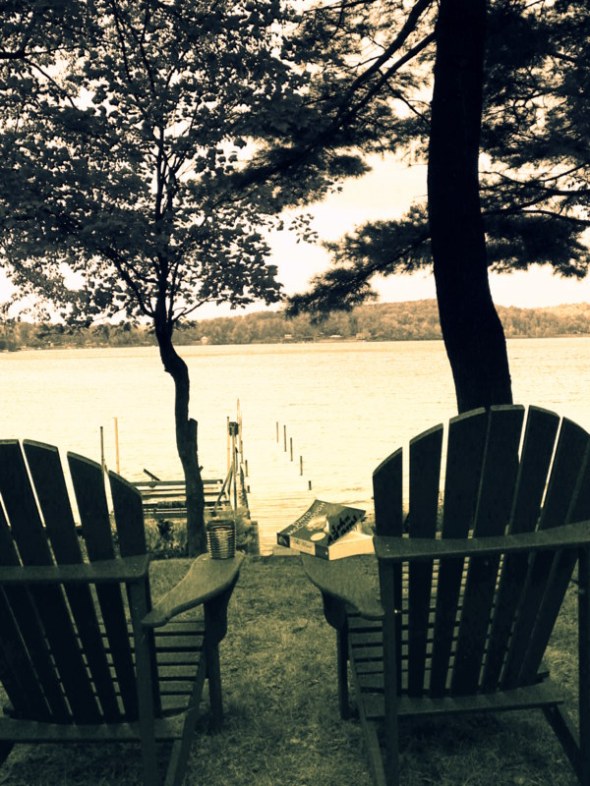My husband and I are looking forward to our April walking trip to Lake Como, Italy. I pulled out my old Barron’s Italian at a Glance, Phrase Book & Dictionary for Travelers to browse. In it I found a postcard of Buca Mario, Piazza Ottaviani, Firenze with this message to myself: “October 3, 1997, Lunch, First Meal in Florence.” This was our first trip as a married couple—walking through Tuscany. Such memories!
I have been doing a lot of walking in preparation for our trip, and just finished listening to A Room with a View by E.M. Forster which, as you know, begins in Italy. Listening to a well-narrated classic is a great way to revisit favorite books—and to take longer walks.
Recently I have discovered the work of Patrick Leigh Fermor. Born in London in 1915, Fermor was a scholar, a war hero, and a renowned travel writer. In 1933 as Hitler was coming to power in Germany, eighteen-year-old Fermor sets out to walk from Holland to Constantinople. He recounts his experiences in three volumes: A Time of Gifts: From the Hook of Holland to the Middle Danube (1977); Between the Woods and the Water: Middle Danube to the Iron Gates (1986), The Broken Road: from the Iron Gates to Mount Athos, published posthumously in 2014.
Since it was on hand at my public library, I started my reading with the second volume, Between the Woods and the Water. The book opens with young Fermor crossing the bridge over the Danube into Esztergom, Hungary, where he enters an exotic world of castles, vast forests, and people such as Hussars and Uhlans. His writing is elegiac. Here’s the description of a Tenebrae celebration in anticipation of Easter Sunday: in a night procession beginning inside the church, “light filled the great building, new constellations of wicks floated in all the chapels, the Paschal Candle was alight in the choir and unwinking stars tipped the candles that stood as high as lances along the high altar.”
The procession then leaves the church with a “vanguard of clergy and acolytes bristling with candles.” As they proceed down the steps, “wheels creaked overhead, timbers groaned and a many-tongued and nearly delirious clangour of bells came tumbling into the night. The storks overhead alarmed by the din, desperately flapping their wings and with necks outstretched they were taking off again, scarlet legs trailing. Black feathers opened along the fringes of the enormous white pinions and then steady and unhastening wing-beats lifted them beyond the chestnut leaves and into the sky.”
The vivid prose continues: “Not a light showed in the town except for the flames of thousands of candles stuck along the window-sills and twinkling in the hands of the waiting throng. The intensity of the moment, the singing and candle flames and incense, the feeling of spring, the circling birds, the smell of the fields, the bells, the chorus from the rushes, thin shadows and the unreality of the moon over the woods and silver flood—all these things hallowed the night with a spell of great beneficence and power.”
Isn’t this why we travel? And to think we’ll be in Venice for Easter.



